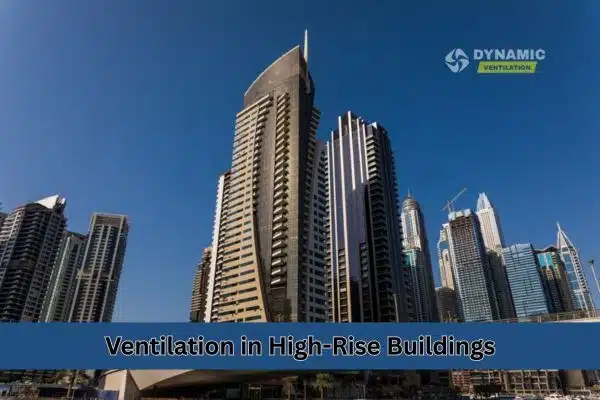
Ventilation in High-Rise Buildings: Ensuring Clean Air and Safety Above the Skyline
High-rise buildings define the modern city skyline, especially in regions like Dubai where urban architecture continues to soar. But behind the glass facades and stunning designs lies one critical system that keeps these structures habitable and safe — ventilation. Efficient ventilation in high-rise buildings ensures a continuous supply of fresh air, controls temperature, removes pollutants, and enhances occupant comfort and safety.
Why Ventilation Matters in High-Rise Buildings
Ventilation isn’t just about air circulation — it’s about maintaining indoor air quality (IAQ), energy efficiency, and safety. In high-rise environments where windows often remain sealed due to wind pressure and temperature control, mechanical ventilation systems become essential.
Proper ventilation helps to:
-
Maintain oxygen levels and remove CO₂ buildup
-
Control humidity and prevent mold growth
-
Manage smoke and heat during emergencies
-
Improve occupant comfort and productivity
Without efficient ventilation, even the most advanced high-rise can face air stagnation, discomfort, and health risks.
Challenges of Ventilation in Tall Buildings
Designing ventilation systems for skyscrapers is far more complex than for low-rise structures. Engineers face multiple challenges, such as:
-
Air Pressure Differences: High-rise buildings experience variations in air pressure from top to bottom, affecting airflow balance.
-
Stack Effect: The vertical movement of air due to temperature differences can lead to unwanted drafts or loss of conditioned air.
-
Energy Efficiency: Maintaining comfort across multiple floors demands energy-smart systems.
-
Smoke Control: During fires, effective smoke ventilation systems are crucial for safe evacuation and reducing damage.
Types of Ventilation Systems Used in High-Rises
High-rise buildings typically use a combination of ventilation systems to achieve optimal performance:
-
Mechanical Ventilation: Uses fans, ducts, and air handling units to circulate air throughout the building.
-
Natural Ventilation: Limited in skyscrapers, but sometimes integrated through controlled openings or double-skin façades.
-
Hybrid Systems: Combine mechanical and natural ventilation for energy efficiency.
-
Smoke Ventilation Systems: Essential for removing smoke and heat during emergencies, protecting occupants and property.
Modern Innovations in Ventilation Systems
With the growth of smart building technologies, modern ventilation systems now feature:
-
Automated controls for air quality and pressure regulation
-
Energy recovery ventilators (ERVs) to reuse conditioned air
-
IoT-enabled monitoring for real-time performance tracking
-
Eco-friendly designs that meet sustainability goals and green building certifications
Dynamic Ventilation integrates these innovations to create reliable and efficient air management solutions tailored for Dubai’s high-rise environment.
Ventilation and Fire Safety
In the event of a fire, smoke ventilation systems become the first line of defense. They work by directing smoke out of escape routes and preventing it from spreading to occupied areas. Properly designed systems can save lives by ensuring visibility, reducing heat, and supporting firefighting efforts.
Dynamic Ventilation specializes in designing smoke ventilation systems in Dubai that comply with local safety regulations and international standards — keeping high-rise occupants safe even in critical situations.
Conclusion
Ventilation in high-rise buildings is more than a comfort feature — it’s a cornerstone of safety, health, and sustainability. From balancing air pressure to managing smoke during emergencies, every component must work seamlessly.
At Dynamic Ventilation, we combine advanced engineering, local expertise, and premium materials to deliver high-performance ventilation systems tailored for Dubai’s iconic high-rises.
Breathe easy, live safer — with Dynamic Ventilation.


0 comments